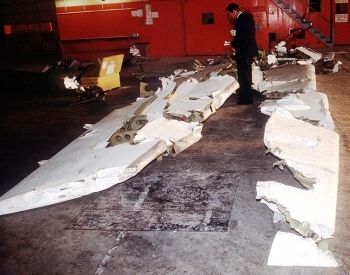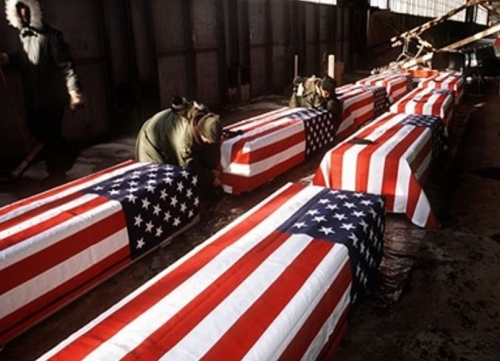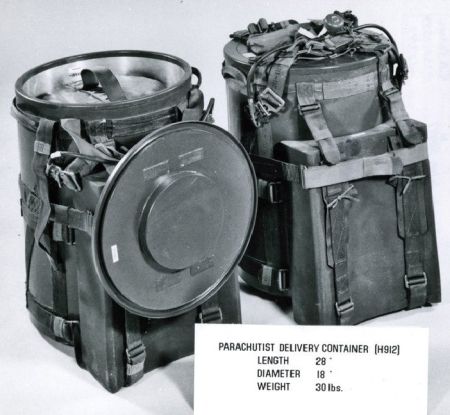Aborted Nuclear Mission and Murder
Arrow Air 1285 blown-up to prevent public disclosure of an aborted nuclear attack on Iraqi nuclear facility.
Wreckage from Arrow Air Flight 1285, which stalled, crashed, and burned killing all 248 passengers and 8 crew members on board, December 12, 1985--Caskets containing the bodies from Arrow Air 1285, Photo: Wikimedia Commons
MK54 Special Atomic Demolition Munition or SADM: SOF Backpack Nukes
(GANDER, Newfoundland) - A US Army Special Forces mission to use nuclear backpacks to blowup an Iraqi nuclear research facility in 1985 led to the death of hundreds of 101st Airborne troops returning from a six-month tour with the Multinational Force and Observers (MFO) in the Sinai when the aircraft was deliberately destroyed in Gander, Newfoundland, with the loss of 248 Army personnel and six crew members.
The McDonnell Douglas DC-8-63CF flight originated in Cairo, stopped in Cologne to change crews and refuel and landed at Gander to refuel but after takeoff, the aircraft never reached more than 700 feet in altitude before an incendiary device planted on the aircraft in Cologne was remotely detonated.
Information from two informed sources supported the destruction of Arrow Air 1285 was done by a CIA faction or their cutouts to prevent the public disclosure of an aborted covert mission by Special Forces to use a nuclear backpack to destroy an Iraqi nuclear research facility.
Public disclosure of the planned use of a nuclear weapon and the deaths of several Special Force troopers would have been breaking news and could have led to the impeachment of President Reagan and Vice President Bush with a ripple effect throughout the government, including the indictments and prosecution of CIA, NSC, DOD and Army officials who were part of an illegal ‘off-the-books’ covert operation.
On-Board Fire and Explosion
The Arrow DC-8-63 fully loaded with 45,000 liters of jet fuel took off from Gander and had difficulty gaining altitude, reaching only about 700 feet above the runway, according to witnesses.
Witnesses on the highway saw a “bright glow emanating from the aircraft before it struck terrain just short of Gander Lake and crashed…3,000 feet from the end of the runway.”1
The Canadian Air Safety Board (CASB) had the primary responsibility for investigating the crash. In a split decision, the CASB (5 to 4) approved a majority report that found the crash caused by icing on the wings and fuselage; a minority report from the four professionals on the board found that icing played no part and that the crash was caused by an incendiary device and explosion.
Majority Report: The aircraft crash was caused by icing on the wings and fuselage, which increased drag and caused the DC-8-63 to stall and crash. The CASB “was unable to determine the exact sequence of events which led to this accident. The Board believes, however, that the weight of evidence supports the conclusion that, shortly after lift-off, the aircraft experienced an increase in drag and reduction in lift which resulted in a stall at low altitude from which recovery was not possible.
“The most probable cause of the stall was determined to be ice contamination on the leading edge and upper surface of the wing. Other possible facts such as a loss of thrust from the number four engine and inappropriate take-off reference speeds may have compounded the effects of the contamination.”



